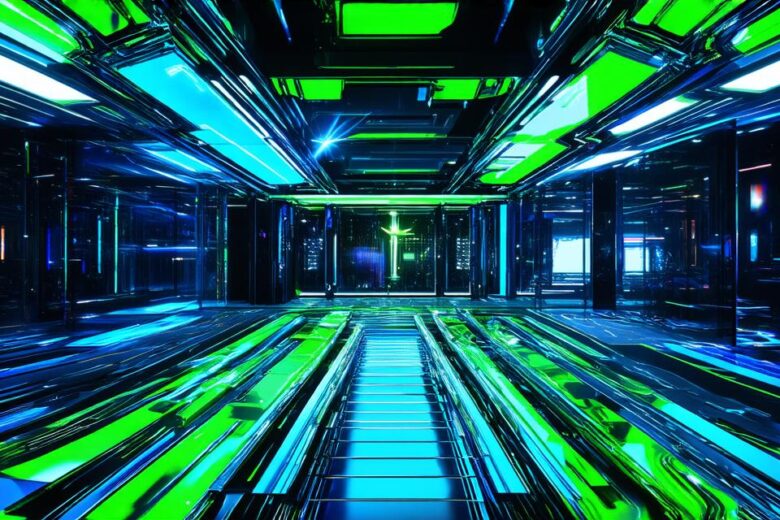Augmented reality (AR) art is a new and exciting field that combines the power of augmented reality technology with the creativity of artists.
AR art allows creators to create interactive, immersive experiences that blend digital content with the real world. This type of art has the potential to revolutionize how we experience art and entertainment, as well as transform industries such as advertising, education, and healthcare.
One of the key features of AR art is its ability to engage viewers in a unique and interactive way. By using AR technology, artists can create experiences that allow users to interact with digital content in real-time, often through the use of mobile devices or other wearable technologies.
Another important aspect of AR art is its potential for storytelling. By combining digital content with the real world, artists can create narrative experiences that are both engaging and thought-provoking.

This can be particularly effective in areas such as advertising, where brands can use AR technology to tell compelling stories about their products or services in a way that resonates with consumers.
One of the most exciting examples of AR art is the work of teamLab, a Japanese digital art collective that uses projection mapping and other AR technologies to create large-scale installations that blend digital content with the real world. Their work has been exhibited in museums and galleries around the world, and has inspired countless other artists to explore the possibilities of AR art.
Another example of AR art is the use of virtual try-on technologies in the fashion industry. By using AR apps or websites, customers can try on clothes virtually before making a purchase, allowing them to see how items will look on their bodies without having to physically put them on.
This not only makes the shopping experience more convenient and efficient, but also allows brands to offer a wider range of sizes and styles than would be possible in a traditional brick-and-mortar store.
AR art is still a relatively new field, and there are many different approaches and styles that are being explored. However, one thing that is clear is that AR technology has the potential to transform the way we experience art and entertainment, as well as many other areas of our lives. As more artists and companies begin to experiment with AR technology, we can expect to see even more exciting and innovative examples of AR art in the future.
FAQs:
1. What is augmented reality (AR) art?
Augmented reality (AR) art is a type of digital art that combines AR technology with the creativity of artists. It allows creators to create interactive, immersive experiences that blend digital content with the real world.
2. How does AR art engage viewers?
AR art engages viewers in a unique and interactive way by allowing them to interact with digital content in real-time through the use of mobile devices or other wearable technologies.
3. What is the potential for storytelling in AR art?
AR art has the potential for storytelling by allowing artists to create narrative experiences that are both engaging and thought-provoking. This can be particularly effective in areas such as advertising, where brands can use AR technology to tell compelling stories about their products or services.
4. What is an example of AR art?
One example of AR art is the work of teamLab, a Japanese digital art collective that uses projection mapping and other AR technologies to create large-scale installations that blend digital content with the real world.
